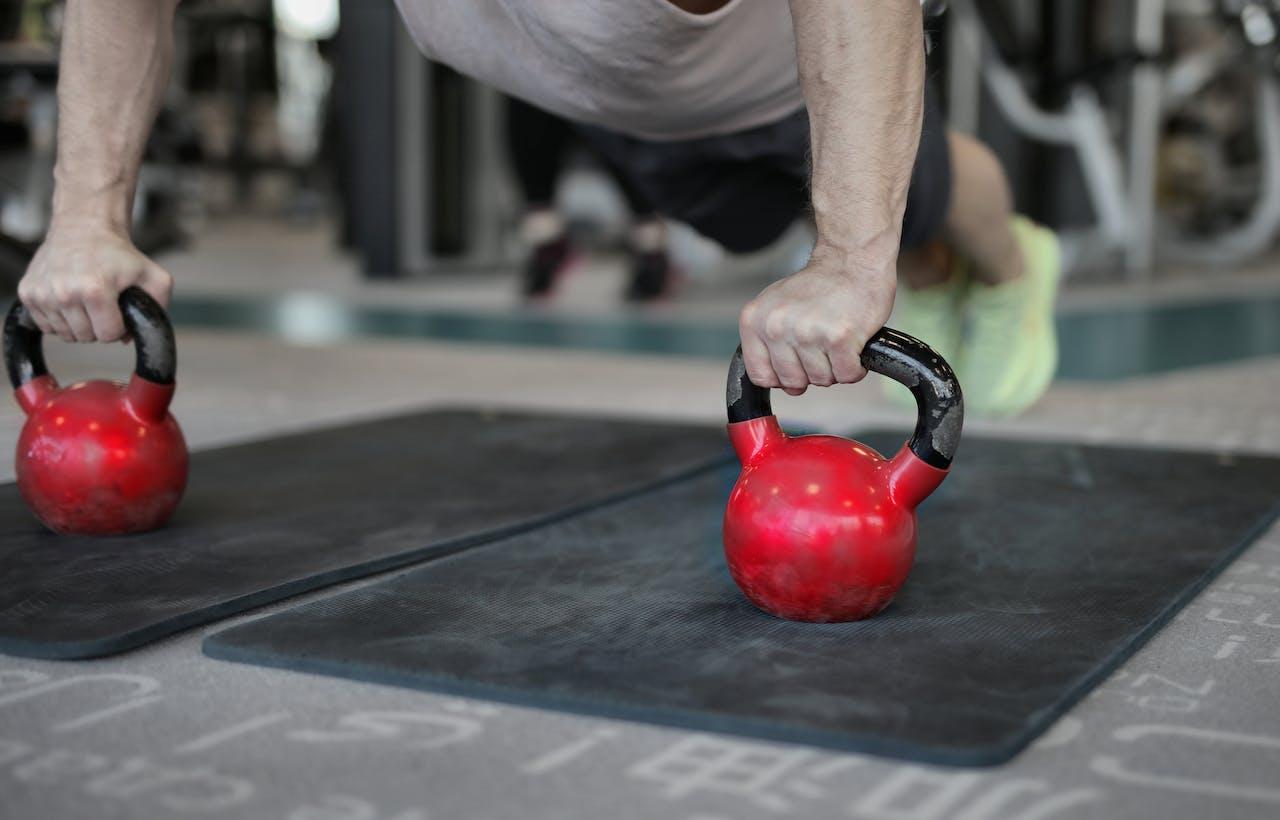
Kettlebells are incredibly effective for building strength & endurance and losing weight. But an essential first step is choosing the right kettlebell size. Selecting too light or too heavy of a kettlebell can increase your risk of injury and diminish results.
At Kettle Strong, we often get asked, “What is the best kettlebell weight for beginners?” While there are recommendations, there’s no universal “right answer”, as the ideal kettlebell size depends on your fitness level, gender, goals and other factors. However, there are some general guidelines to follow that can set you up for success as you learn proper kettlebell technique.
In this beginner’s guide, we’ll cover:
– Key considerations for determining the right kettlebell size
– Recommended kettlebell weights for men and women
– How to progress to heavier kettlebells over time
Factors That Influence Ideal Kettlebell Weight
When choosing your first kettlebell, here are some key factors to take into account:
Your Gender
Men can generally handle heavier weights than women due to greater muscle mass and upper body strength. Recommendations are typically separated by gender to account for this.
Your Fitness Level
If you are new to working out, it’s wise to start very light to allow your body time to adjust to lifting weights properly. Those with higher fitness levels can start slightly heavier. Always remember not to ego lift.
Your Goals
If aiming to build strength, a heavier kettlebell that challenges your muscles may be appropriate. For improving cardio endurance, a lighter continuous training approach is often better.
History of Injury
If you have past shoulder, back, hip or knee injuries, starting very light reduces the likelihood of aggravating those vulnerable areas as you learn proper form.
Once you have a baseline kettlebell weight nailed down, you can progress heavier as your body adapts.
Best Kettlebell Weight for Beginner Women
For women just starting, here are our suggested kettlebell sizes:
- Beginner: 15 to 18 lbs (7 to 8 kgs)
- Intermediate: 18 to 26 lbs (8 to 12 kgs)
- Advanced: 26+ lbs (12+ kgs)
The 15-pound (7 kg) kettlebell is small and unintimidating, making it a great introductory size for beginner women. Foundational kettlebell lifts like the swing, press, and squats provide enough challenge to engage muscles without overtaxing the body.
While not incredibly heavy, consistent training with proper form teaches proper movement patterns and builds baseline strength. Once you, a beginner, can confidently perform sets of 10-15 reps with good technique, you can move up incrementally to the next kettlebell size.
An 18-26 lb (8-12kg) kettlebell suits an intermediate female looking to progress. Performing sets of 8-12 reps challenges muscles more intensely to facilitate strength gains. As you advance above 26 lbs (12kg), enter the advanced territory where maximum strength is built through heavier loads lifted for fewer reps.
Best Kettlebell Weight for Beginner Men
For male beginners, we recommend starting with the following kettlebell weights:
- Beginner: 30 to 35 lbs (14 to 16 kgs)
- Intermediate: 35 to 44 lbs (16 to 20 kgs)
- Advanced: 44+ lbs (20+ kgs)
Since most men have a higher baseline level of upper body strength and muscle mass than women, you can start with a heavier kettlebell in the 30-35 lb (14-16kg) range. But lifting too heavy too soon can quickly lead to injury and technique breakdown.
It’s better to start on the lighter side of this range, master the basics, and then progress heavier slowly rather than jumping to an advanced weight immediately because your ego tells you that you can. Building a proper strength foundation takes patience and self-control.
Once you have built some initial core and muscle strength with good form using a lighter kettlebell, you can start implementing heavier swings, presses and lifts.
Kettlebell training is about starting slowly with lighter weights and increasing intensity with heavier weights as your body adapts.
The Safest Approach for Kettlebell Beginners
While not as exciting as slinging heavy weights around, the safest approach with kettlebells is starting very light and progressing gradually. Small incremental jumps allow your body time to build tendon, ligament and muscle strength to support heavier weights properly.
Rushing into using advanced weights too quickly leads to injury and regression. Progressing 5 to 10 lbs simultaneously allows incremental challenge while minimally straining connective tissues and muscles as you practice proper form.
It’s always better to build a solid strength foundation before chasing heavier weights and risking injury. Be patient and stick with lighter kettlebells until your body has adapted joint stability and coordination for each exercise pattern. Lifting correctly is always more important than lifting heavy.
Next Steps for Properly Progressing With Kettlebells
Now that you know the best kettlebell sizes to start with, here are quick tips for continuing to progress properly:
– Master form and technique before adding weight
– Progress in 5-10 lb increments max each session
– Focus on higher rep ranges before lifting heavy
– Listen to warning signs from your body
– Increase recovery if feeling overworked
Building proper functional fitness with kettlebells is a gradual journey. But with smart programming and weight progressions, you will be hitting new PRs and feeling great in no time!
If you want personalised guidance and coaching for kettlebell training progression, sign up for one of our online coaching programs or stop by one of our gyms in Victoria to get started on your kettlebell journey the right way!

